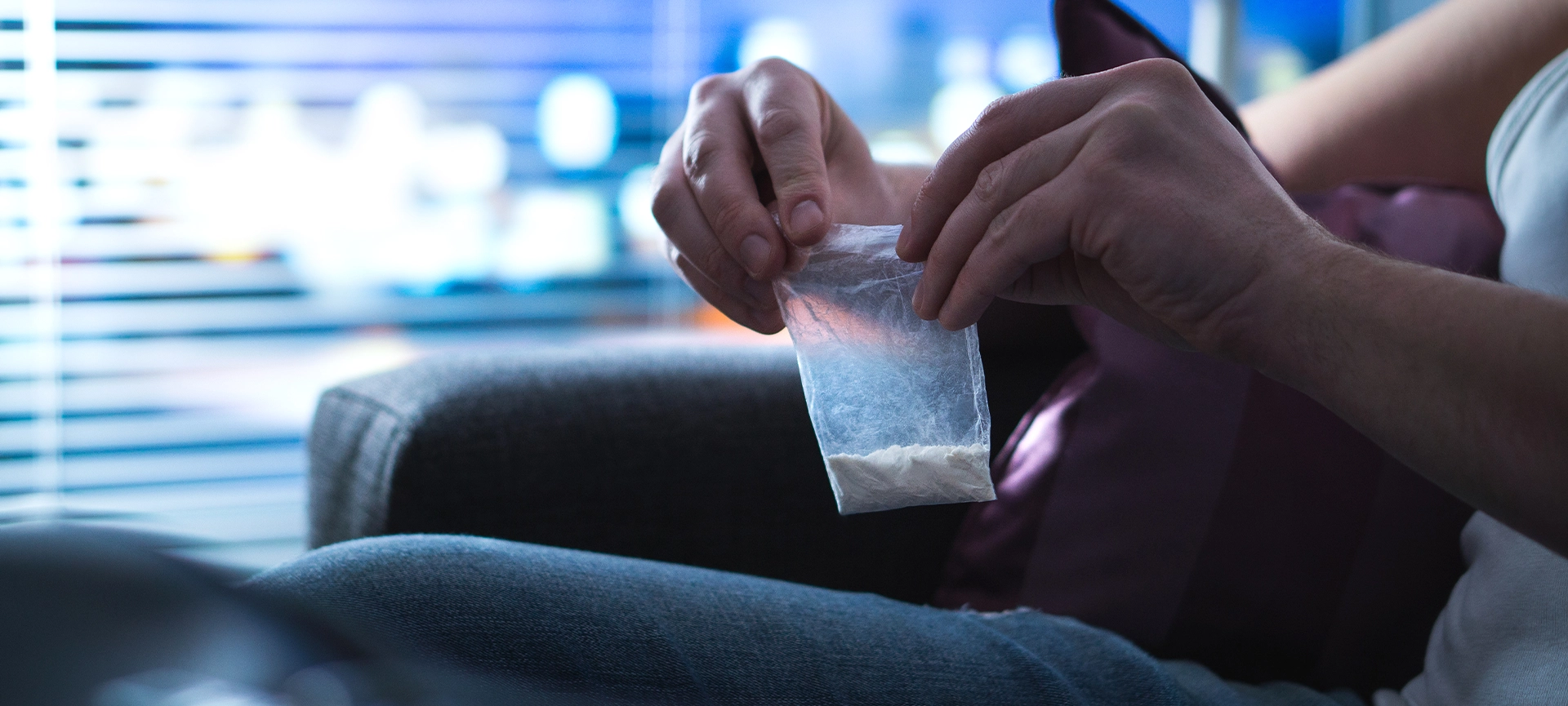Cocaine withdrawal symptoms are the signs you experience when you stop the use of cocaine. Although, cocaine withdrawal may not be intense when compared to other substances. However, there’s still a need for caution and proper management. Symptoms like nausea, vomiting and fatigue can quickly get worse.
Not to worry though, over the course of this article, we will show you what to expect during cocaine withdrawal. We will cover the physical symptoms of cocaine withdrawal. More importantly, we will answer the question of how long cocaine withdrawal takes.
What is Cocaine Abuse?
Abuse is the word we use to describe taking an illegal substance like cocaine. Cocaine acts as a stimulant for the central nervous system. It stimulates a high level of dopamine production — a chemical the brain associates with reward and pleasure.
However, over a long period of time, users will have to take more cocaine to get the same effects. Over-time, the negative effect of this usage on every body part becomes evident. This is how cocaine abuse starts.
What is Cocaine Withdrawal?

Cocaine withdrawal are the symptoms that manifest when a cocaine user decides to end the regular use of cocaine. The withdrawal process is an effective part of cocaine addiction treatment. If you don’t stop using, there’s no way you can recover from cocaine addiction.
Is cocaine withdrawal dangerous?
For substances such as alcohol, the withdrawal process involves severe physical symptoms. However, with cocaine withdrawal, the more severe symptoms are of a psychological nature. In a way, cocaine withdrawal is safer compared to other drug withdrawal processes.
Withdrawal from cocaine isn’t always severe. However, there are some symptoms associated with cocaine withdrawal. They can broadly be grouped into:
- Physical health issues: Abusers of alcohol and cocaine are susceptible to cardiac problems during withdrawal.
- Mental health concerns: Depression, violence, and anxiety are signs most people exhibit at the start of withdrawal.
Cocaine withdrawal timeline
Cocaine withdrawal symptoms start becoming evident as early as 90 mins after the last dose. The short time frame is a result of the very short half-life of cocaine. Specific factors that decide the withdrawal timeline includes:
- Length of use: Usage for years means you may witness continuous lingering withdrawal symptoms.
- Environment: Returning to an environment that triggers the use will slow the withdrawal process.
- Polysubstance dependence: Dependence on more than two drugs affects the withdrawal process.
- Size of dose: People who use large amounts of cocaine may encounter symptoms of greater intensity.
- Medical health issues: Certain health conditions such as depression can affect the withdrawal process.
Signs and Symptoms of Cocaine Withdrawal
Most cocaine addicts consume the substance in a binge and crash method. Therefore, you can experience the symptoms without actually quitting.
As soon as you get off a cocaine high, you’ll start feeling cocaine addiction symptoms. Cocaine withdrawal involves three stages. The three different stages are discussed below.
The crash

You experience the crash 24 hours after a binge or period of sustained high-intensity use ends. After the initial high, the crash that comes after will make you experience increased cravings. When you stop taking cocaine, you will most likely experience an empty, lethargic and gloomy feel.
Amid a cocaine crash, possible signs you may experience include:
- Increased hunger
- Anxiety
- Tiredness
- Possible sadness
- Lack of energy and motivation
Withdrawal
Withdrawal is the second stage, and it starts within a week of last use. The symptoms of cocaine withdrawal during this stage can last for up to 10 weeks. Furthermore, you can expect the following:
- Low energy
- Cravings
- Changing mood
- Trouble concentrating
- Dysphoria
Extinction

This stage, which is the final stage, can continue for six months. At this stage, the level of symptoms experienced will reduce seriously. The symptoms for this stage include:
- Low mood
- Some cravings
- Fatigue
Evidence suggests that continuous lack of impulse control after four weeks of abstinence is a norm. Impulse control deficiencies may be part of an array of signs that supports the occurrence of protracted withdrawal syndrome for cocaine.
Related article: How to Break Free from Cocaine Addiction
Post-acute withdrawal syndrome (PAWS)
PAWS refers to symptoms that cocaine users experience after a period of prolonged withdrawal. Other terms used to describe PAWS are protracted withdrawal, protracted abstinence and post-withdrawal.
Research proves that acute withdrawal, depending on the drug, is characterized by physical symptoms such as
- Seizures
- Intense drug cravings
- Tremors
- Sweating, rapid heart rate
PAWS symptoms can occur for more than two months after ending the usage of cocaine. The nature of these symptoms is mainly psychological, affecting your stress response and sleep pattern. Generally, PAWS symptoms last for a couple of months, though in some cases weeks or, in rare situations, a year.
Symptoms of PAWS
Several symptoms of cocaine withdrawal are associated with PAWS. People withdrawing from other drugs, and alcohol also experience these symptoms.

The amount of cocaine you use and the frequency of usage make up the factors that affect the individual experience of PAWS. These symptoms are:
- Mood swings: While the brain balances after removal, mood swings can occur for no reason.
- Anhedonia: This is the inability of the body to produce feel-good chemicals itself.
- Anxiety: Drugs that inhibit the brain’s activities result in an anxiety-prone state when you.
- Insomnia: Sleep patterns altered by cocaine intake take time to readjust.
- Cognitive impairment: This refers to the difficulty in maintaining concentration and thinking clearly.
Treatment and Medication for Cocaine Withdrawal
All attempts made to invent a drug that will help with withdrawal has been unsuccessful. In fact, some drug trials only increased the pain that comes with withdrawal. Therefore, as of today, no medication is approved for cocaine detox.
However, for specific symptoms that certain users display, some medications are prescribed. Users that have insomnia can take Benadryl or any sleep aid with little risk. In summary, the best option is to undergo withdrawal at a cocaine addiction treatment centre near you.
Cocaine detoxification
Detoxification is the management of cocaine withdrawal symptoms, together with the effects of long-term abuse. The detox program helps evaluate and maintain the symptoms while your body prepares for abstinence.
Don’t consider detox as a cure for addiction. Instead, it is the first step in the road to cocaine addiction recovery. It is recommended that you detoxify in an environment that’s safe and supportive. An environment is considered safe and supportive when it offers no access to drugs.
The goal of cocaine detoxification may include:
- Creating support and structure
- Preventing relapse
- Establishing soberness
- Education on cocaine use
At the end of the detox, an excellent plan should be in place to begin cocaine abuse treatment. Treatment should target forming healthy relationships, attending self-help groups, finding employment or social skills. The above effort is to help you form a balanced life during recovery.
The therapeutic approach that is effective for cocaine addiction treatment includes:
- Cognitive-behavioural therapy (CBT): Helps you realize the effects of feelings, behaviour and thoughts on cocaine use.
- Motivational interviews: This help to boost the effort required to improve the motivation to stay drug-free
- Contingency management: Engaging in drug-free activities using an external reward system.
Conclusion
In this blog, we have been able to explore the signs and symptoms to expect during cocaine withdrawal. The truth is, cocaine withdrawal isn’t life-threatening. Although, getting help during the withdrawal stage can be crucial. Also, you can’t overemphasize the importance of a safe environment during withdrawal. This is vital to keep the cravings in check.
On your own, navigating cocaine addiction can be complicated. So, look for help and allow a professional to guide you through withdrawal. Here at Addiction Rehab, our experienced cocaine treatment experts will come up with a custom treatment plan. In the end, we will help you develop the tools you need to ensure long-term sobriety after cocaine addiction treatment.
Related article: Cocaine Use Statistics Canada | Cocaine in Canada







